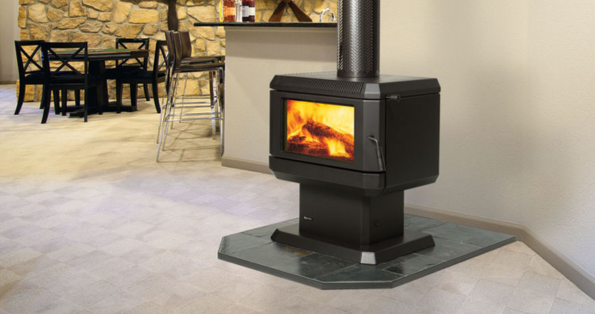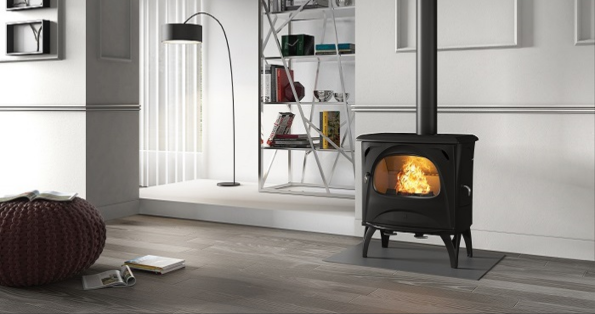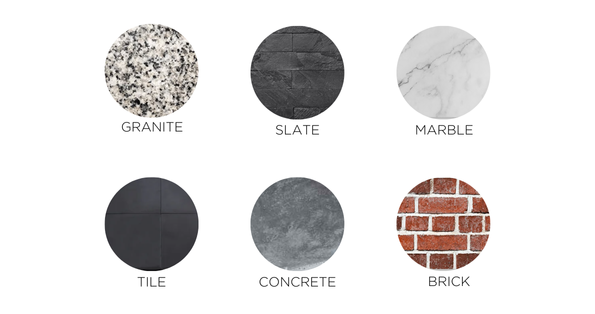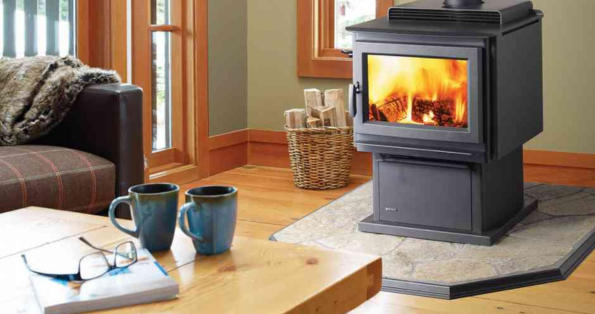Choosing the Perfect Hearth for Your Wood Fireplace
A hearth enhances both safety and style in your home. Explore the best designs and materials to create the perfect foundation for your wood fireplace.
Choosing the Perfect Hearth for Your Wood Fireplace: A Complete Guide
A wood fireplace is more than just a heat source—it’s a statement piece that adds warmth and character to any space. One of the most important yet often overlooked aspects of a fireplace is the hearth. More than just a decorative base, the hearth serves a crucial role in protecting floors from heat and embers while enhancing the overall look and functionality of the fireplace. Selecting the right one involves considering your fireplace’s specifications, exploring different design styles, and choosing durable materials. Whether you prefer a flush, raised, or shelf-style hearth, understanding the options will help you create a safe and stylish space.

What is a Hearth and Why is it Important?
A hearth is the non-combustible surface beneath and around a wood fireplace, designed to protect flooring and catch stray embers. Typically constructed from heat-resistant materials such as stone, tile, or metal, it serves multiple essential functions:
Safety: Prevents fire hazards by shielding the floor from heat and sparks.
Functionality: Provides a practical area for fireplace accessories and firewood storage.
Aesthetic Enhancement: Adds depth and visual appeal to the fireplace, complementing both classic and contemporary interiors.

Hearth Design Options: Height, Material, and Style
Fireplace hearths come in various designs that impact both aesthetics and practicality. Here’s a breakdown of the primary hearth styles:
Hearth Heights: Flush, Raised, and Shelf-Style
Flush Hearths: Sitting level with the floor, this design creates a sleek, modern look. While visually seamless, it requires careful heat protection since it lacks a raised barrier to contain embers.
Raised Hearths: Elevated slightly above the floor, this style is often easier to install and enhances traditional and rustic spaces. It provides additional seating or a ledge for displaying decor.
Shelf-Style Hearths: Aligned with the firebox’s base, these hearths create a floating effect and offer a functional ledge for fire tools, decorations, or firewood. This option works well in contemporary homes.
Combination Hearths: Some designs blend multiple heights, such as a raised section for seating and a flush portion for a minimalist look, provided they meet safety requirements.
Each style offers unique benefits, making it essential to choose one that complements your home’s architecture and fireplace design.
Selecting the Right Hearth Material
The hearth must be constructed from durable, heat-resistant materials to ensure both safety and longevity. Here are some top material choices:
Stone (Granite, Slate, and Marble): These natural materials are incredibly heat-resistant and durable. Granite offers diverse colour options, slate brings a rustic touch, and marble adds an elegant, high-end feel—though it requires more maintenance.
Tile and Brick: Tile provides endless customisation options, allowing for intricate patterns and colour variations, while brick delivers a timeless, cozy aesthetic suited for traditional settings.
Concrete: Ideal for modern and industrial designs, concrete can be moulded into various shapes and finishes while providing a strong, heat-resistant base.
Metal Panels: While less common, metal hearths offer a sleek, industrial look and high heat resistance. They are often paired with stone or tile for added texture and contrast.
Glass: Best for contemporary homes, tempered glass hearths add a unique, transparent effect that blends seamlessly into modern interiors. Available in clear, frosted, or tinted variations, they bring a stylish touch to flush hearth designs.

When selecting a material, consider its durability, maintenance requirements, and how well it matches your home’s aesthetic. Brick and stone are great for low-maintenance households, while polished surfaces like marble or glass require extra care.
Understanding Hearth Requirements for Your Fireplace
Not all fireplaces have the same hearth specifications. The dimensions, heat output, and design of your wood fireplace determine the size and thickness. Always refer to the manufacturer’s installation manual to ensure compliance with safety guidelines, including the required extension distance around the firebox and the minimum material thickness needed for heat protection.
Additional Tips for Choosing a Hearth
Follow Manufacturer Guidelines: Ensure your hearth meets the safety standards specified in your fireplace manual.
Consider Maintenance Needs: Choose a material that fits your lifestyle—low-maintenance options like stone or brick are ideal for busy households.
Match Your Style: Select a design that complements both your fireplace and overall home décor.

Final Thoughts
A well-designed hearth not only enhances the functionality and safety of your wood fireplace but also contributes to the overall aesthetic of your space. Whether you opt for a traditional raised hearth, a sleek flush design, or a contemporary shelf-style hearth, make sure it aligns with both your practical needs and interior style. By carefully selecting the right material and design, you can create a stunning, long-lasting focal point for your home. Always consult the fireplace’s installation manual before making any modifications.
Contact our friendly staff for further inquiries!
